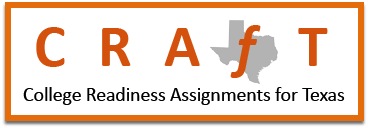A. Matter and its properties
1. Know that physical and chemical properties can be used to describe and classify matter.
a. Distinguish between physical properties (e.g., density, melting point) and chemical properties (e.g., ability to react, combustibility). Know that chemical changes create new substances (e.g., rusting), while physical changes do not (e.g., boiling).
b. Understand that, as an intrinsic property, density does not change as sample size is changed, and be able to perform density calculations.
2. Recognize and classify pure substances (elements, compounds) and mixtures.
a. Describe separation techniques for both mixtures and compounds.
b. Distinguish between homogeneous and heterogeneous mixtures.
c. Understand that, as an intrinsic property, density does not change as sample volume is changed, and be able to perform density calculations.
B. Atomic structure
1. Summarize the development of atomic theory. Understand that models of the atom are used to help understand the properties of elements and compounds.
a. Describe the discoveries of Dalton (atomic theory), Thomson (the electron), Rutherford (the nucleus), and Bohr (planetary model of the atom); understand how each discovery contributed to modern atomic theory.
b. Identify the masses, charges, and locations of the major components of the atom (protons, neutrons, and electrons); describe Rutherford’s “gold foil” experiment that led to the discovery of the atomic nucleus; and describe Millikan’s “oil drop” experiment that led to determining the charge on an electron.
c. Describe basic wave properties (calculate wavelength, frequency, or energy of light) and understand that electrons can be described by the physics of waves.
d. Explain the importance of quantized electron energy and its relationship to atomic emission spectra.
e. Understand the electron configuration in atoms (Aufbau principle, the Pauli exclusion principle, Hund’s rule) and their connection with the periodic table.
C. Periodic table
1. Know the organization of the periodic table.
a. Identify periods and groups on the periodic table.
b. Identify metals, metalloids, and non-metals on the periodic table.
c. Distinguish between and describe patterns in electron configurations for representative elements, transition elements, inner-transition elements, and noble gases. Predict the common charges on the representative elements from the periodic table.
2. Recognize the trends in physical and chemical properties as one moves across a period or vertically through a group.
a. Define and describe the periodic trend: atomic radii, ionic radii, ionization energy, electron affinity, and electronegativity.
b. Use the periodic trends to compare the size and behavior of atoms and ions.
D. Chemical bonding
1. Characterize ionic bonds, metallic bonds, and covalent bonds. Describe the properties of metals and ionic and covalent compounds.
a. Draw Lewis dot structures for simple molecules, including simple hydrocarbons.
b. Use Valence Shell Electron Pair Repulsion (VSEPR) model to predict molecular shapes.
c. Describe nonpolar and polar covalent bonds. Use a chart of electronegativities to determine bond polarity.
d. Determine if a molecule is polar (contains a dipole moment).
E. Chemical reactions
1. Classify chemical reactions by type. Describe the evidence that a chemical reaction has occurred.
a. Write equations for chemical reactions using appropriate symbols and balance the equations by applying the Law of Conservation of Mass. Write net ionic equations.
b. Predict the products of a reaction that fall within the five general types of chemical reactions (synthesis, decomposition, single replacement, double replacement, and combustion).
c. Use an activity series to predict whether a single replacement reaction will occur.d. Use solubility rules to determine the precipitate formed in a double replacement precipitation reaction.
2. Describe the properties of acids and bases and identify the products of a neutralization reaction.
a. Define pH and describe acid and base solutions in terms of pH. Use hydrogen ion or hydroxide ion concentrations to determine the pH of an acid or base solution.
b. Use both commercial and non-commercial indicators to identify acid, base, and neutral solutions in a lab experiment.
c. Distinguish between the Arrhenius and Brønsted definitions of acids and bases. Identify conjugate acid-base pairs.
d. Describe how a titration is performed and how this process can be used to determine the concentration of an unknown acid or base solution.
e. Measure and compare the pH of various common acids and bases (e.g., household cleaners, vinegar, citrus juice).
3. Understand oxidation-reduction reactions.
a. Differentiate between oxidation and reduction, and between oxidizing agent and reducing agent.
b. Understand the consequences of corrosion processes and define and describe the electroplating process.
c. Determine the oxidation number of any atom in an element, ion, or compound.
4. Understand chemical equilibrium.
a. Identify the factors that cause a shift in equilibrium (e.g., temperature, concentration, volume, pressure).
b. Explain LeChatelier’s principle and use this principle to predict changes in the equilibrium position of a reaction.
5. Understand energy changes in chemical reactions.
a. Distinguish between endothermic and exothermic reactions. Draw energy diagrams for endothermic and exothermic reactions.
b. Describe the Law of Conservation of Energy.
6. Understand chemical kinetics.
a. Describe collision theory and use this theory to explain effects of concentration, temperature, and nature of reactants on reaction rate.
b. Define catalyst and describe how a catalyst affects a reaction rate.
F. Chemical nomenclature
1. Know formulas for ionic compounds.
a. Name and write formulas for binary and ternary ionic compounds, using Group A (representative) metals and Group B (transition) metals, including those containing common polyatomic ions (e.g., nitrate, sulfate, carbonate, ammonium, phosphate, hydroxide).
2. Know formulas for molecular compounds.
a. Name and write formulas for binary molecular compounds and acids.
b. Categorize a compound as ionic or molecular.
G. The mole and stoichiometry
1. Understand the mole concept.
a. Use Avogadro’s number and molar mass to convert to moles of a substance. Determine the percent composition of a compound. Calculate the empirical formula of a compound from mass or percent composition data.
2. Understand molar relationships in reactions, stoichiometric calculations, and percent yield.
a. Construct mole ratios for a reaction to calculate the reactant amounts needed or product amounts formed in terms of moles or mass.
b. Calculate percent yield, theoretical yield, or actual yield for a reaction.
H. Thermochemistry
1. Understand the Law of Conservation of Energy and processes of heat transfer.
a. Distinguish among radiation, convection, and conduction as means of heat transfer.
b. Describe processes of heat transfer.
c. Perform calculations involving heat transfer, using specific heat and latent heat (phase changes).
2. Understand energy changes and chemical reactions.
a. Describe and give examples of renewable and non-renewable energy resources.
b. Describe endothermic and exothermic reactions.
c. Know that systems naturally tend to move in a direction that increases disorder or randomness (entropy).
I. Properties and behavior of gases, liquids, and solids
1. Understand the behavior of matter in its various states: solid, liquid, and gas.
a. Describe how gas pressure is affected by volume, temperature, and the addition of gas.
b. Describe the behavior of solids, liquids, and gases under changes in pressure.
2. Understand properties of solutions.
a. Describe factors affecting solubility, units of concentration, colligative properties, and colloids.
b. Calculate the molarity and molality of solutions.
c. Determine boiling point elevation and freezing point depression for a solution.
3. Understand principles of ideal gas behavior and kinetic molecular theory.
a. Use kinetic molecular theory to explain how gas pressure is affected by volume, temperature, and the addition of gas.
b. Distinguish between real and ideal gas behavior, and identify the criteria in the kinetic molecular theory that conflict with the properties of real gases.
4. Apply the concept of partial pressures in a mixture of gases.
a. Use Dalton’s Law to determine the partial pressure of a gas in a mixture of gases.
5. Know properties of liquids and solids.
a. Describe the properties of liquids (e.g., surface tension, capillary action).
b. Describe the structure of solids (e.g., crystal lattice structure, unit cell, amorphous solids).
6. Understand the effect of vapor pressure on changes in state; explain heating curves and phase diagrams.
a. Define boiling, freezing, sublimation, etc.
b. Explain heating curves and phase diagrams.
7. Describe intermolecular forces.
a. Distinguish between dispersion forces, dipole interactions, and hydrogen bonding. Identify the most important intermolecular force acting on a substance.
J. Basic structure and function of biological molecules: proteins, carbohydrates, lipids, and nucleic acids
1. Understand the major categories of biological molecules: proteins, carbohydrates, lipids, and nucleic acids.
a. Recognize each type of biological molecule by its structural formula, and describe simple chemical tests or procedures to detect, identify, or characterize each type.
K. Nuclear chemistry
1. Understand radioactive decay.
a. Identify the types of radioactive decay particles that occur, compare their properties (e.g., mass, charge, composition, penetrating ability), and write equations representing the decay processes.
b. Explain the concept of half-life for a radioisotope, and use this concept to determine the amount of a certain sample of radioisotope remaining after a period of time, given the length of the half-life.
c. Determine the length of time that has passed, given the remaining amount of radioisotope, the original amount of radioisotope, and the length of the half-life.
d. Explain how carbon-14 is used to date artifacts.
e. Compare and contrast the nuclear processes of fission and fusion.


 Show Printable Version
Show Printable Version




